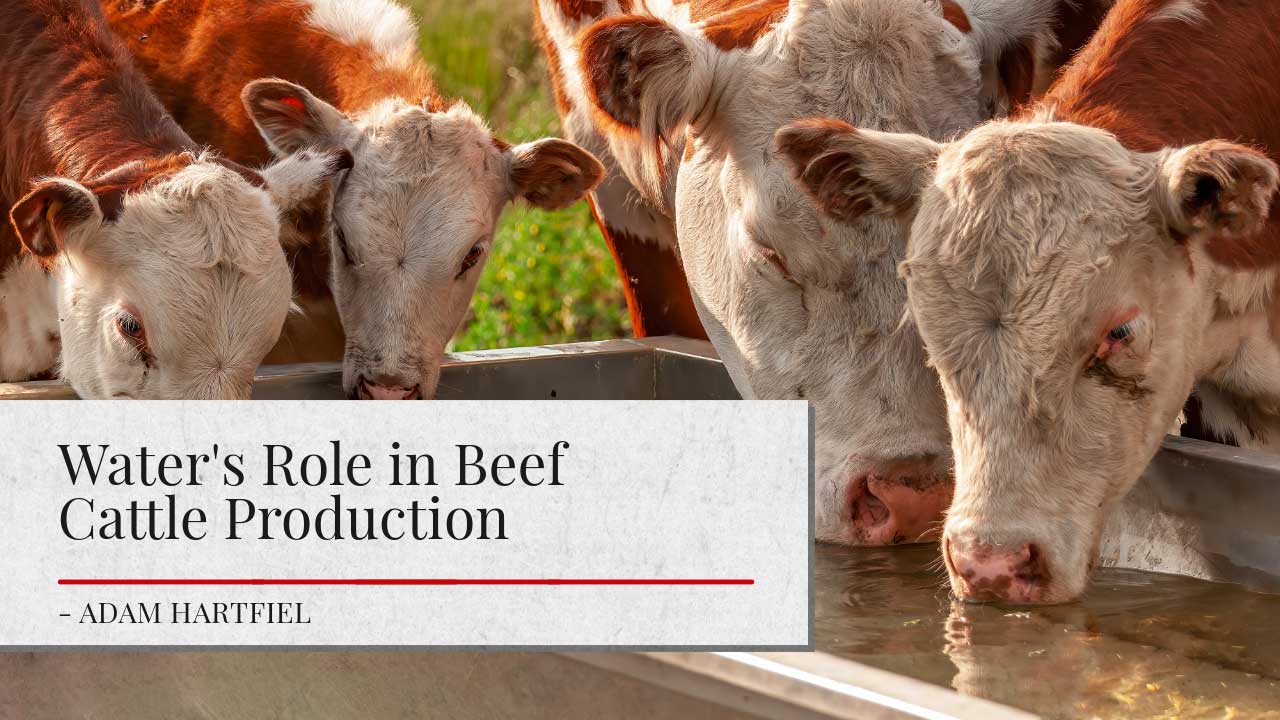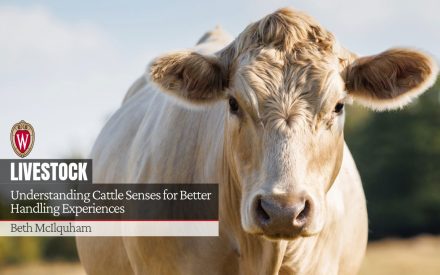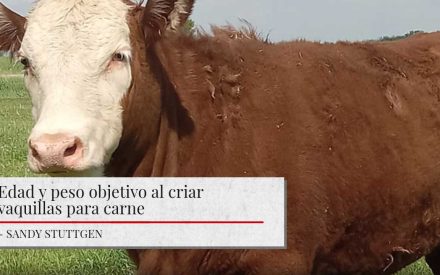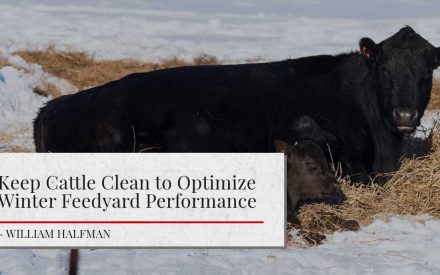
Introduction
Water is often overlooked as the most important nutrient for beef cattle. It is a necessity for cattle to survive. In fact, over 50% of mature cattle weight comes from it. Water is necessary for everyday functions including lactation and the regulation of body temperature. It is also used to produce saliva, which is needed to breakdown and digest forages. Understanding the importance of water quality and quantity, and how these two factors change throughout the year, can help producers ensure their cattle obtain the most important nutrient on earth.
Water quality
Water quality for cattle is important for overall performance and health. Problems can arise and even harm cattle in some instances. Some of these problems include high nitrates, high mineral content, algae growth, and water temperature. Nitrate problems may occur during times of drought when both water and feed could contain high nitrate concentration, causing potential sickness in cattle. Symptoms can include lethargic behavior, difficulty breathing, lack of coordination, diarrhea, and even death. Other water quality issues include stagnant water, that can be found in tanks, ponds, and other water bodies. Stagnant water can grow blue-green algae, which is toxic to cattle. This alga can grow rapidly in warm temperatures with high amounts of sunlight making it important for producers to keep an eye out during summer grazing. Flooding can also create water quality problems; floods can bring sediment and other foreign materials into the cattle’s water source, reducing its quality. Testing water on your operation is a fairly simple task that can help identify potential water quality problems. Testing should be done regularly and can be submitted to commercial or university labs for analysis.
Access to clean water
Cattle need access to clean and potable water at all times of year. Consider making a creep area for calves to access water while the cow’s drink. This can allow calves to drink before the tank/water source lowers below the level calves can reach. Consider the distance cattle are walking to obtain potable water and make adjustments to decrease time spent traveling to reach the water source. Cattle will tend to travel as a group to drink if the water source is more than 900 ft. away, this could cause issues if the water source cannot keep up with demand. Keeping water closer to where cattle are grazing will lead to optimal pasture unitization.
Amount of water
The amount of water cattle will drink in a day will vary due to age, size, stage of production, and weather. Cattle can get water from different sources other than tanks, ponds, etc. which affects the amount they drink. Dietary moisture content influences water consumption, silage or fresh forages grazed in pastures contain higher amounts of water compared to dry forages, altering the animals water intake.
How much water do cows and bulls drink?
As outside temperatures rise, cattle will consume more water in order to regulate their body temperature and other body functions. It is estimated that cows will consume roughly two gallons per 100 lbs. of their bodyweight while lactating. Since the milk these cows are producing is roughly 90% water, they will require the more water compared to growing stock, bulls, or dry cows. Bulls and dry cows drink an estimated 1-1.5 gallons of water per 100 lbs. of body weight. As the temperature and animal weight rise, so will water consumption, as depicted in Table 1.
| Animals | Weight (lb.) | 50°F | 70°F | 90°F |
|---|---|---|---|---|
| Growing Stock (Heifers, Steers) | 400 600 800 | 4.0 6.0 8.0 | 6.0 8.0 11.0 | 10.0 13.0 17.0 |
| Lactating Cows | 1100 1300 | 13.0 15.0 | 18.0 20.0 | 20.0 22.0 |
| Bulls | 1,600+ | 10.0 | 13.0 | 22.0 |
Source: NRC (2016). Adapted from NRC Nutrient Requirements of Beef Cattle, 8th revised edition; Winchester and Morris (1956).
Conclusion
The importance of fresh, clean water cannot be disregarded because it is the main player in all cattle’s growth, development, and overall production. It is a necessity for cattle to survive and produce like you, the producer, expect them too. Prioritize the importance of water on your operation today and every day to help your herd.
References
Arispe, Sergio. (2015). Water nutrition and quality for beef cattle. Oregon State University OSU Extension Service.
https://extension.oregonstate.edu/animals-livestock/beef/water-nutrition-quality-beef-cattle
J.J. Wagner and T.E. Engle. 2021. Invited Review: Water consumption and drinking behavior of beef cattle, and effects of water quality. Applied Animal Science, Vol 37, Iss 4, pp. 418-435.
https://extension.oregonstate.edu/animals-livestock/beef/water-nutrition-quality-beef-cattle
Mason, Kate. Martin, Gabby. N.D. Water Quality for Beef Cattle. University of Tennessee.
https://utbeef.tennessee.edu/wp-content/uploads/sites/127/2023/01/W1126.pdf
Mullenix, Kim. Brantley, Eve. (2019) Water Requirements of Beef Cattle. Auburn University.
https://www.aces.edu/blog/topics/beef/water-requirements-of-beef-cattle
Walz, Troy. Berger, Aaron. (2023) How much water do cattle need and what water problems should cattle producers watch for? University of Nebraska Extension.
https://beef.unl.edu/beefwatch/2023/how-much-water-do-cattle-need-and-what-water-problems-should-cattle-producers-watch-0
Reviewed by
Bill Halfman
Beef Outreach Specialist
University of Wisconsin-Madison, Division of Extension
Beth McIlquham
Regional Livestock Educator
University of Wisconsin-Madison, Division of Extension
Author

Adam Hartfiel
Regional Livestock Educator – Adam Hartfiel is Regional Livestock Educator for Adams, Green Lake, Waushara Counties. His educational programming has focused on beef cattle production and management.


 Understanding Cattle Senses for Better Handling Experiences
Understanding Cattle Senses for Better Handling Experiences Importance of Forage Growth Stages When Grazing Cattle
Importance of Forage Growth Stages When Grazing Cattle Edad y peso objetivo al criar vaquillas para carne
Edad y peso objetivo al criar vaquillas para carne Keep Cattle Clean to Optimize Winter Feedyard Performance
Keep Cattle Clean to Optimize Winter Feedyard Performance


